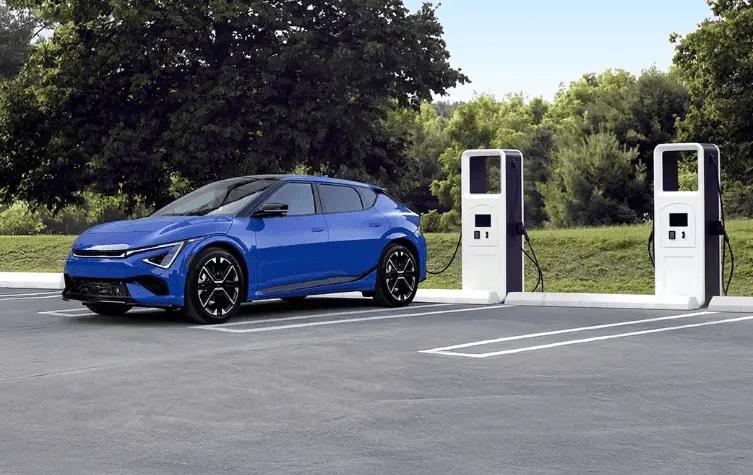Understanding Weak EV Batteries: Causes, Impacts, and Best Practices

Understanding Weak EV Batteries: Causes, Impacts, and Best Practices
Introduction
LiCB Charge, a leading EV charger manufacturer in China, delivers reliable AC and DC electric vehicle charging stations along with comprehensive charging solutions.
The rise of electric vehicles (EVs) has transformed the automotive landscape, offering drivers cleaner, quieter, and more efficient alternatives to traditional combustion engines. At the core of this transformation lies the lithium-ion battery pack—essentially the “engine” of an EV. Battery health directly affects performance, reliability, and long-term value.
But what happens when the battery begins to weaken? A weak EV battery typically shows reduced charge capacity, slower charging, and diminished driving range. Factors such as age, temperature extremes, and driving habits gradually degrade the chemical cells within the battery, impacting efficiency and output.
Understanding battery degradation is crucial—not only for day-to-day convenience but also for maximizing cost efficiency and supporting the broader adoption of electric mobility. This article explores the science of battery degradation, its impact on performance, common mistakes that accelerate wear, and best practices for prolonging battery life.
The Science Behind Battery Degradation
Lithium-ion batteries are the standard for modern EVs due to their high energy density, relatively fast charging, and long cycle life. However, all batteries gradually lose capacity. Key contributors to degradation include:
-
Age and Usage Cycles: Each charge and discharge cycle slightly reduces maximum capacity over time.
-
Extreme Temperatures: Heat accelerates chemical reactions, while freezing temperatures hinder ion movement.
-
High Charging Rates: Frequent use of DC fast chargers generates extra heat and stress, shortening battery life.
-
Deep Discharges: Allowing the battery to drop near zero—or staying at 100% for long periods—stresses cells.
Degradation is gradual. Batteries slowly lose efficiency, forcing EV systems to compensate and ultimately limiting performance.
How a Weak Battery Affects EV Performance
-
Reduced Driving Range
A degraded battery delivers less range than when new. For example, an EV that originally offered 400 km may drop to 300 km over time, increasing “range anxiety” for long trips or areas with sparse charging infrastructure. -
Slower Charging
As internal resistance rises with age, charging—even on fast chargers—takes longer. Commuters may need to adjust routines or plan charging more carefully. -
Decreased Power Delivery
Acceleration and responsiveness rely on the battery’s ability to provide high current. Weak batteries may result in slower acceleration and reduced performance during high-demand situations like highway merges or steep climbs. -
Lower Energy Efficiency
A degraded battery consumes more energy per kilometer, reducing cost savings and environmental benefits. -
Thermal Management Strain
Older batteries generate more heat, forcing thermal management systems to work harder. Poor heat control can accelerate degradation and affect safety.
Common Mistakes That Accelerate Battery Wear
EV owners play a crucial role in battery longevity. Common pitfalls include:
-
Overcharging: Keeping the battery at 100% stresses the cells. Daily charging is best maintained between 20–80%, reserving full charges for long trips.
-
Deep Discharging: Regularly letting charge fall below 20% accelerates wear.
-
Neglecting Battery Balancing: Uneven charge/discharge across cells can reduce usable capacity. Periodic balancing helps maintain performance.
-
Excessive Fast Charging: While convenient, frequent DC fast charging stresses cells and shortens lifespan.
-
Ignoring Software Updates: Battery management system updates improve efficiency, thermal regulation, and degradation prevention.
Best Practices for Maintaining EV Battery Health
-
Optimal Charging Habits
-
Charge between 20–80% for daily use.
-
Reserve 100% charges for long trips.
-
Prefer AC home charging over frequent fast charging.
-
-
Temperature Management
-
Park in shade or insulated areas in heat.
-
Pre-condition batteries in cold weather.
-
Use onboard thermal management features.
-
-
Smooth Driving
-
Avoid aggressive acceleration to reduce deep discharge cycles.
-
Utilize regenerative braking to minimize battery stress.
-
-
Regular Maintenance
-
Schedule professional battery health checks.
-
Keep software updated.
-
Monitor state-of-health (SoH) via vehicle diagnostics or apps.
-
-
Strategic Charging
-
Avoid leaving the vehicle plugged in indefinitely after full charge.
-
Use scheduled charging to finish just before driving.
-
Maintain buffer capacity for regenerative braking.
-
Broader Implications of Battery Health
-
Resale Value: Battery condition is a key consideration for used EV buyers. A well-maintained battery preserves value.
-
Total Cost of Ownership: Battery replacement is expensive; extending battery life minimizes long-term costs.
-
Environmental Impact: Longer battery life reduces resource consumption, emissions, and waste from premature battery replacements.
The Future of EV Batteries
-
Solid-State Batteries: Higher safety, faster charging, and longer lifespan.
-
Recycling & Second-Life Applications: Degraded batteries can serve in energy storage systems.
-
Advanced Battery Management Systems: AI-driven BMS can predict degradation and optimize usage to maximize health.
These innovations are expected to alleviate many current concerns about performance loss and weak batteries.
Conclusion
A weak EV battery affects range, power, efficiency, and overall ownership costs. However, mindful practices—avoiding overcharging and deep discharges, limiting fast charging, managing temperature, and keeping software up to date—can dramatically extend battery life.
Healthy batteries benefit not only drivers but also the environment and the broader EV ecosystem. Protecting battery health is key to unlocking the full potential of electric vehicles, ensuring smoother driving, lower costs, and sustainable mobility for the future.
It's important to know about Google SEO to help your website rank higher in search results.








